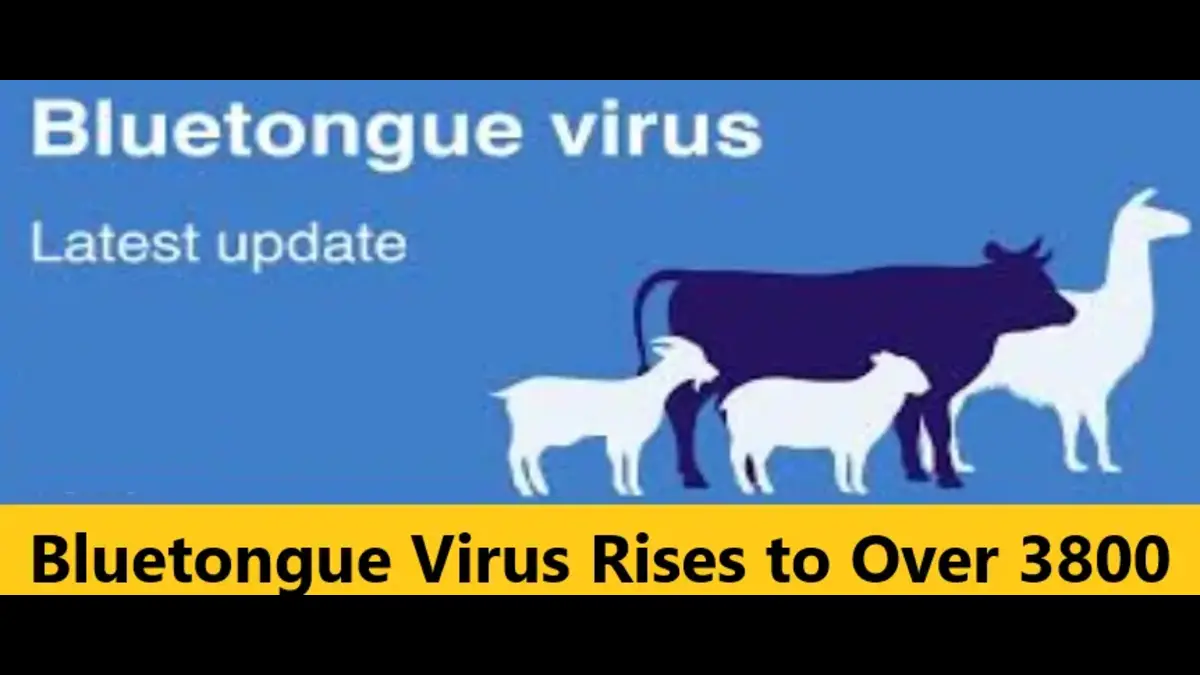Bluetongue Virus Rises to Over 3800 approximately 900 more than Monday
Bluetongue Virus Outbreak in the Netherlands: Alarming Increase in Cases
The Netherlands is currently facing a rapid spread of the bluetongue virus, a significant concern for both farmers and authorities.
As of now, the virus has been detected in a staggering 3,807 locations across the country, according to the latest report from the Netherlands Food and Consumer Product Safety Authority (NVWA).
Read More: What is Adenovirus? Check Symptoms and Treatment
This marks an unprecedented rise of 898 new cases since the previous report released on Monday, making it the fastest surge in half a week since the virus re-emerged in the Netherlands last month.
Understanding the Bluetongue Virus
Bluetongue is a viral disease that primarily affects ruminants like sheep, cattle, and goats.
The virus is transmitted by biting midges (Culicoides species), and while it does not directly impact humans, the economic consequences for the livestock industry can be severe.
The disease is characterized by fever, swelling of the face and tongue, lameness, and in severe cases, it can lead to death. For more detailed information on the bluetongue virus, visit the World Organisation for Animal Health website.
Rapid Spread of the Virus
The recent spike in bluetongue cases has raised significant concerns among Dutch farmers and authorities.
The virus’s reappearance and its fast-paced spread have prompted the NVWA to issue warnings and recommendations for livestock owners.
The rapid increase in cases suggests that the virus is spreading more quickly than anticipated, which could have devastating effects on livestock populations if not controlled effectively.
Measures to Combat the Virus
To mitigate the spread of bluetongue, the NVWA has implemented several measures:
- Monitoring and Reporting: Livestock owners are urged to monitor their animals closely for symptoms and report any suspected cases immediately.
- Vector Control: Efforts are being made to control the population of biting midges, the primary vectors of the virus, through insecticide treatments and other methods.
- Vaccination Campaigns: Although there is no specific treatment for bluetongue, vaccination campaigns are being considered to protect livestock from future outbreaks.
What Livestock Owners Should Do
If you are a livestock owner in the Netherlands, it is crucial to take the following steps to protect your animals:
- Inspect Regularly: Keep a close eye on your animals for any signs of bluetongue, such as fever, swelling, or lameness.
- Maintain Hygiene: Ensure that your livestock’s environment is clean and free of standing water where midges can breed.
- Consult a Veterinarian: If you suspect any animals may be infected, contact a veterinarian immediately for advice on how to proceed.
For more detailed guidelines, visit the Netherlands Food and Consumer Product Safety Authority website.
Conclusion
The rapid increase in bluetongue cases in the Netherlands is a cause for concern. With 3,807 affected locations reported, immediate action is required to control the spread of the virus. Livestock owners should remain vigilant, adhere to NVWA guidelines, and take proactive measures to protect their animals from this potentially devastating disease.
Note: The information above might not be accepted 100%. Please verify from your own sources. We will not be responsible/liable for any kind of loss due to our content.
For more news, please visit Munafa Marketing.




